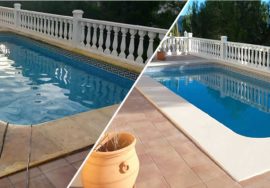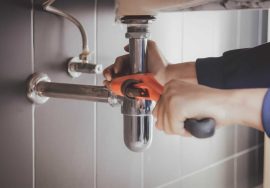
The Sun Is Free Again!
The Sun Is Free Again!
The royal decree of 15/2018 frees the solar power industry in Spain which for years had been punished with impeding taxes and controls. The new law is aimed at promoting the self generation of electricity and the transition to a greener and more sustainable model of energy production.
The previous taxation of solar installations created barriers for the self production of electricity for private households, businesses and industries.
Taxes Aboloished
The recently approved law abolishes the taxes and tolls for installations up to 100KW not connected to the electricity network; namely solar panel installation for the typical house. In order to promote these kinds of installations, the bureaucratic application to the authorities has been simplified as well as the requirements.
In addition, the law includes the possibility for a shared self electricity production installation. This concept means that the installation doesn’t have to be placed exactly in the same building of consumption, but it can be installed in communal areas and be shared by different owners.
3 possible versions of a solar panel installation.
The generation of your own electricity is getting easier and cheaper encouraged by the liberalization of the market promoted by this law change. There are three possible versions of a solar panel installation.
- Instant self generation. Is based on at least one solar panel unit, which converts the sun’s energy into electricity and an additional energy source from the ordinary electricity supply.
- Self generation with batteries. The electricity produced by the solar panels is stored in batteries to be used when there is no sunlight. The batteries will supply the necessary electricity. As in the first case an additional backup energy supply from the ordinary electricity network will ensure the continuous supply if the batteries run out.
- Self generation with batteries not connected to the main electricity network. In this case the solar panel installation and batteries have a greater capacity in order to guarantee a constant supply.
In all three cases the intervention of a planning professional working along side a specialist electrician is required to prepare and achieve planning approval from the local authority.
The “solar kit”
A minimum “solar kit” for a detached house, providing 10 KW, is composed of 20 photovoltaic panels, a power inverter or regulator, 24 battery units, around 100 meters of cables of different colours and diameters, the supporting metal structure for the panels to be placed on the ground or on top of the roof, 2 distribution boxes and 10 panels connectors. Each panel has a size of 1956 x 992x 40 mm, each battery is 191 x 210 x 701 mm big. The requirement of the necessary surface for panels and batteries is a condition to be observed in cases of new constructions.
[responsive] [/responsive]
[/responsive]
What energy is provided
This installation provides energy for: 2 A+++ fridges, 1 A+++ freezer, 1 TV 75 W eight hours a day, 4 PCs eight hours a day, a dishwasher three days a week, 15 LED lights to 10W four hours a day, a washing machine three times a week with cold water, electric hob two hours a day, an oven three hours a week, a tumble dryer up to 1200W three times a week, irrigation pump up to 1CV two hours a day, an inverter air conditioner unit five hours a summer day, a boiler of up to 1200W one hour a day, a pool pump to 0.75CV four hours a summer day.
ROI (Return on Investment)
The question for each end user is whether the installation is a good return on investment or not. An approach to answering this question is to calculate the necessary time to amortize the installation, which means the moment when the investment is equated with the money saved. To make this calculation the consumer needs to know the final cost of the installation and the benefits or saving, that the solar installation provides each year. Since 2010 the costs of photovoltaic installations have reduced up to 70% whilst ordinary electricity and gas bills have increased 3.5% a year. Currently an installation for a detached house can be amortized in a period of 8-12 years. The expected advancement in technology is likely to reduce this period to just 5 years.
Article written by:
Javier Leonardo Rímolo
Arquitecto
Gross & Rimolo
0034 606616084
0034 962962324








